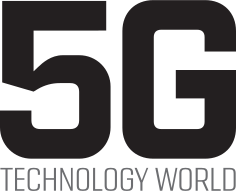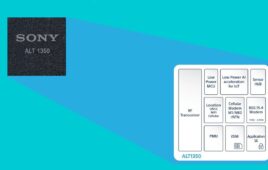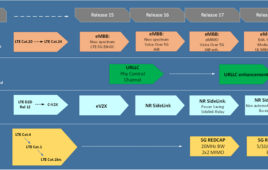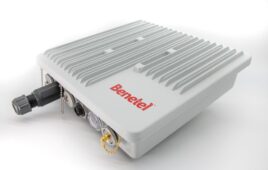Here’s a look at the highlights of 2011, as well as a quick take on where the market is headed in 2012.
Some players have hit it big in the mobile device market this year (Samsung Galaxy S II), while others have fallen flat (HP Touchpad). But even some of 2011’s misses (BlackBerry PlayBook) have been critical for their respective companies, proving that in the device market, a product doesn’t necessarily have to be successful to be important. For instance, the HP Touchpad’s initial failure and eventual popularity upon clearance proved just how popular a sub-$200 tablet could be, setting the stage for Amazon’s Kindle Fire. Here’s a look at some of the most important devices this year, not all of which were consumer pleasers.
 SAMSUNG GALAXY NEXUS AND GALAXY S II
SAMSUNG GALAXY NEXUS AND GALAXY S II
At First Glance: The Galaxy Nexus and Galaxy S II are important devices if only to highlight Samsung’s dominance in the U.S. smartphone. The Galaxy S II features top-ofthe-line specs and met with favorable reviews and sales. The Galaxy Nexus, also a spec’d out monster, had a built-in fan base in Google lovers, as it is the next iteration in the Nexus family.
Why They’re Important: The popular Galaxy S II was at least partially responsible for Samsung’s overtaking of Apple in total third-quarter shipments. It’s also a capable high-end Android device. Of course, Apple isn’t too happy about it and has included most of the Galaxy family in the ongoing patent spat between the two companies. And then there’s the Galaxy Nexus. Launched in part with Google, the Galaxy Nexus is the first Android phone to come running Ice Cream Sandwich, the next iteration of Google’s mobile platform.
 iPHONE 4S
iPHONE 4S
At First Glance: While the iPhone 4S, which doesn’t support LTE, doesn’t have an NFC chip and lacks any kind of new form factor twist over the original iPhone 4, appeared to be a letdown for consumers, it still managed to break sales records across carriers. Many who said they were disappointed by the lack of an iPhone 5 admitted to upgrading if only because this was the last device in which that they can be assured Steve Jobs had a hand.
Why It’s Important: The iPhone 4S introduced the much discussed Siri virtual assistant. Will voice be the next killer app? Probably best to ask Siri.
 KINDLE FIRE
KINDLE FIRE
At First Glance: Perhaps the most highly anticipated tablet since Apple’s launch of the iPad 2, the Kindle Fire comes bearing an established customer base, sophisticated billing platform and most importantly, Amazon’s complete content ecosystem (music, movies, apps, eBooks).
Why It’s Important: According to a report by IHS iSuppli, Amazon will be selling the Kindle Fire at a loss, turning on its head Apple’s iTunes model. Apple’s iTunes store is all about selling more devices, whereas all of Amazon’s devices are about selling more content, as well as physical goods. It will be interesting to see if Amazon feels it has what it takes to approach the smartphone market anytime soon.
HP TOUCHPAD
At First Glance: Back when webOS was still considered an active mobile platform, if not a marginally viable contender, HP rolled out the HP Touchpad. Initial reviews were tepid, boasting decent hardware but slow performance. Sales were dismal and former CEO Leo Apotheker decided, perhaps prematurely, that webOS and all the devices based upon it were being shelved.

Why It’s Important: Oh, what a fire sale can do for sales. Originally priced at $499, the Touchpad took an initial $100 price cut, followed by clearance prices of $99 and $149 for the 16GB and 32GB models, respectively. At these prices, HP sold through all its available inventory. Since then, the company has actually promised another run of the Touchpad. Best Buy was promising Nov. 1 availability of the Touchpad at the clearance prices. So why is a $99 tablet based on a platform that’s essentially in limbo important? Quite simply, it proves that a sub-$200 tablet could be very, very appealing to consumers.
 MOTOROLA DROID RAZR
MOTOROLA DROID RAZR
At First Glance: The world’s thinnest Android smart/superphone, the Motorola Droid Razr boasts a bullet-proof Kevlar backplate and top-of-the-line specs, including LTE connectivity, with Android Ice Cream sandwich coming in an update.
Why It’s Important: The Motorola Droid Razr brings the company full circle and is symbolic of where the industry is headed, namely towards higher smartphone penetration. If Motorola was bolstered by its iconic razor-thin feature phone, then the Motorola Droid Razr implicitly begs the question of whether Motorola can repeat what it did with the original Razr in a market where smartphones are the rule, not the exception.
 BLACKBERRY PLAYBOOK
BLACKBERRY PLAYBOOK
At First Glance: The UI on the BlackBerry PlayBook is perhaps its biggest achievement. However, battery troubles and the required BlackBerry tethering facet for native email led to a disappointing reception for the first tablet and QNX device from Research In Motion (RIM). The PlayBook had a killer set of speakers but that’s apparently not enough to boost sales.
Why It’s Important: This is RIM’s first device based on QNX, the platform upon which the company is building all future devices. It appears that fostering a development community around QNX will be the deciding factor for RIM here… Well, that and keeping its network up and running.
 NOOK COLOR, TABLET
NOOK COLOR, TABLET
At First Glance: The Nook Color was a bold move by Barnes & Noble. At $249, this jailbreakable Android-based tablet/eReader with an LCD touchscreen met with impressive reviews and decent sales. It’s a little bit heavier than your average eReader, but for the price consumers seemed smitten with the idea of reading their eBooks in full color, with the added luxury of being able to browse the Web and check email.
Why It’s Important: With the Nook Color, Barnes & Noble shattered the fine line between the eReader and the tablet. The move was arguably the catalyst for simultaneously driving down both eReader and low-end media tablet prices, as well as a precursor to Amazon’s Fire tablet. The subsequent launch of the Nook Tablet was just affirmation that B&N is looking to continue head-to-head competition with Amazon to sell more content.
 NOKIA LUMIA 800
NOKIA LUMIA 800
At First Glance: When Nokia and Microsoft teamed up as a way of saving not only Nokia’s smartphone dreams but Microsoft’s mobile platform dreams as well, many said the two combined formed little more than pipe dreams. Then along came Nokia’s Lumia 800. Analysts say the hardware is exceptional and the innards are up to snuff. The Lumia 800 features a 3.7-inch AMOLED ClearBlack curved display, 1.4 GHz processor, 8-megapixel camera with Carl Zeiss lens, 16GB of internal memory, 512 MB RAM and 1450 mAh battery.
Why It’s Important: This is the realization of Nokia and Microsoft’s vision. Nokia sees a capable smartphone based on a platform that is first and foremost NOT Symbian. Microsoft sees Windows Phone 7 taking off on the back of Nokia’s considerable distribution and brand name. But perhaps most important here is evidence that Nokia can and did execute, as it said it would, under the guidance of new CEO Stephen Elop. Whether this venture is successful remains to be seen, but at the very least, the ship is headed in the right direction with the Lumia 800.
WHAT’S AHEAD IN 2012
Regardless of whether the devices highlighted here were hot or just flops, they all come bearing processors and screen resolutions that only a few years ago were reserved for laptops. Today’s tablets and smartphones are so sophisticated that even exponential improvements in processing speed and screen resolution will go unnoticed by consumers, if only because we’ve reached the threshold of human perception. For instance, users of the dual-core iPhone 4S will barely notice the speed differential between it and the single-core iPhone 4. Which begs the question: How will OEMs differentiate going forward?
As counterintuitive as it might sound, Kevin Burden, vice president and practice director of mobile devices at ABI Research, says OEMs will have to harken back to yesteryear to solve the differentiation problem. As specs become less interesting, OEMs have shifted the message to platform and software, he says. For instance, one buyer might want an Android phone so she can get a certain app on the Android Market. Another might want an iOS phone, so she can use Siri. But soon, Burden argues, HTML5 will make even proprietary apps and software a moot point for consumers.
“Eventually, you can just see where this is going with HTML5 as it kind of homogenizes all these different platforms, where experiences are going to be very similar,”
Burden says. “We’re going to go back to buying our phones based on hardware and form factor… Really, we’re going to go back to looking at what materials are used and how it feels in our hands.” Burden says this is where Nokia might come out on top. “If you look at their new Lumina 800… I will say, they are absolutely right, they did a better job at hardware than anyone has done to this point,” he says. “If I was going to go buy a Windows Phone and you lined up every Windows Phone on the market, this is the one I would pick.”
Will this happen tomorrow? Probably not. Burden says HTML5 still needs a little polish, but it’s not too far in the future that smartphones will be so similar (in the same way feature phones were years ago) that consumers are really going to want the one that just feels right in their hands.
Given this take, one wonders whether RIM might actually have a shot at a return in 2012, given that its BBX platform is heavily dependent on HTML5. Burden says that even as far as RIM has fallen, it’s still in the same fight as the rest of the industry.
“People want to bash RIM and say that’s a difficult thing they have to go through with their platform. Well, that’s what the entire industry is going through on a much greater scale. Do you develop for the existing base or for the base that you think is going to be successful in the future?”




